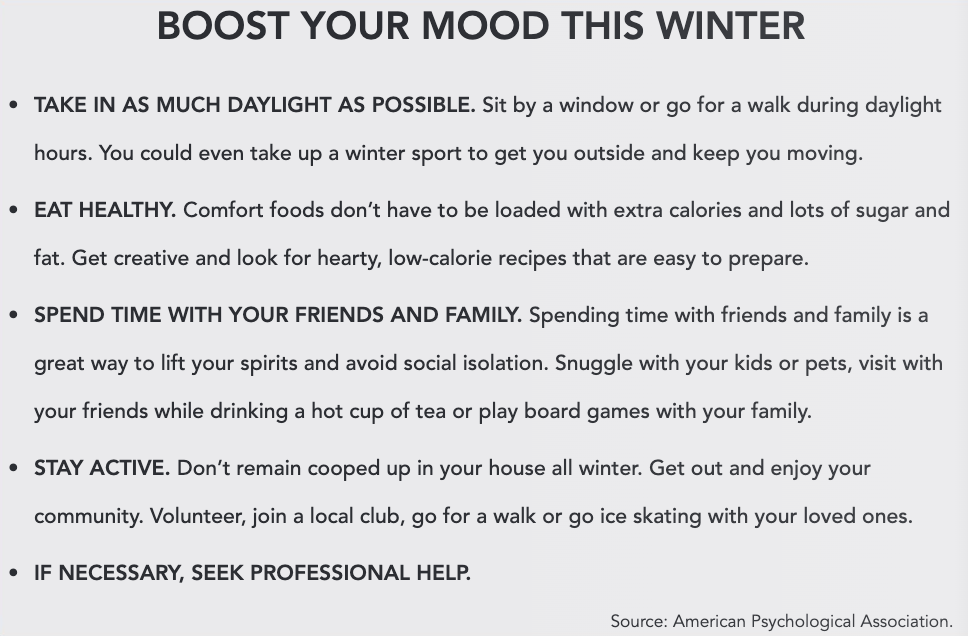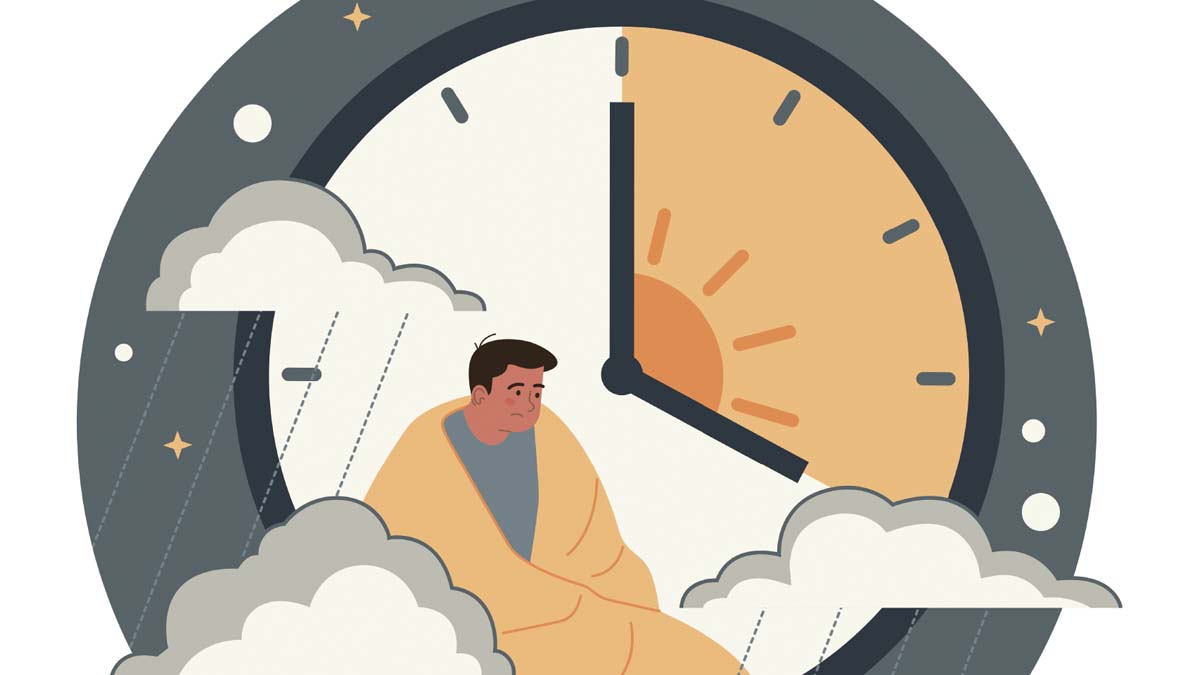Once the ornaments are boxed up and the holiday tablecloths are put away, there might be a feeling of relief that the chaos of November and December are behind us – even a chance to look forward to spring just around the corner.
For some people, however, the winter months, coupled with feelings of sadness and helplessness, stretch endlessly. The American Psychiatric Association reports that about 5% of adults in the United States experience what is known as seasonal affective disorder. During the winter, stressors linked to the tension from family gatherings, financial worries and sometimes simply being stuck inside can affect us.
“SAD should not be confused with winter blues,” said Stacy Alexander, APRN-CNP, psychiatric mental health nurse practitioner at Bon Secours St. Francis Health System. “Although the stressors during winter months may affect everyone in small ways, SAD is a type of depression with overlapping symptoms of major depression. It’s never good to try to push through or ignore symptoms.”
According to the National Institute of Mental Health, some of the main symptoms associated with SAD are feelings of hopelessness, loss of interest or pleasure in hobbies and activities, decreased energy, difficulty concentrating, changes in sleep or appetite and social withdrawal. Symptoms return at the same time each year and, on average, last four to five months.
Although much less common, some people experience SAD in the summer months, with symptoms of insomnia, agitation, restlessness or anxiety.
There is no clear cause of SAD, but a number of factors seem to play a role.
“SAD is associated with the number of daylight hours,” explained Jacquie Atkins, MS-LPC, who is a counselor and owner at Anchors of Hope Counseling Center in Charleston.
“In the winter, we have shorter daylight hours, leading to a decrease in the serotonin in our bodies, which we need to regulate our mood,” Atkins added. “We also may have increased levels of melatonin, which regulates our sleep. These hormones work together to regulate our night-day cycle and create our body’s normal daily rhythm.”
With less sunlight on our skin, our bodies also have lower levels of vitamin D which may also affect our mood.
Disturbing these levels seems to result in the behavior changes associated with SAD, although more research is needed.
Luckily there are treatments for SAD and plenty of professionals to help. Knowing when to get help is key. According to Atkins, “When a person feels overwhelmed, that’s when they should be concerned. If the symptoms interfere with their daily activities, they should seek help.”
“Early diagnosis and treatment is key to recovery,” said Kelly Quarles, NCC, LPC, LPC/S, certified trauma therapist and owner of Guided Healing Licensed Clinical Therapy in Mount Pleasant. “Like any form of depression, having small goals and reasonable expectations for change is important.”
Specific treatments for SAD generally include light therapy, psychotherapy and medication. A provider can help sort out and monitor what treatment or combination of treatments might be best for an individual.
Light therapy can be easily incorporated into a person’s day.
“A light therapy lamp mimics outdoor light, and using it for about 30 to 45 minutes in the morning may help with symptoms,” said Alexander.
“Cognitive behavioral therapy can sometimes be extremely helpful,” she added. “There is a type of CBT that works specifically with SAD patients, helping them develop coping skills by identifying negative thoughts and learning to replace those with positive ones.”
In certain cases, medication or vitamin D may be prescribed to help alleviate symptoms, sometimes used in conjunction with other treatments.
Anyone can be affected by SAD. However, symptoms occur more often in women than in men, and younger people are more likely to experience symptoms than older adults. SAD is also more common in people with depression or bipolar disorder and in those living far from the equator, where there are fewer daylight hours in the winter.
The good news is that there are ways to stay ahead of SAD symptoms.
“Once an individual can predict emerging patterns of SAD year after year, symptoms can be predicted and therefore reduced,” Quarles said. “Starting behavior changes, possible medication, light therapy and cognitive restructuring patterns can be practiced preventatively leading up to the more challenging months.”
Unfortunately, there is a stigma often associated with mental illnesses – including SAD. Atkins believes that “one of the most loving things you can do is speak out when you see signs of depression in someone else. When said with care and concern, it can be life changing to support someone getting help.”
Quarles agreed: “Experiencing SAD symptoms or a full SAD diagnosis is nothing to be ashamed of, and asking for help is key in healing from this condition, to find ways to thrive and find peace and happiness during more challenging parts of the year.”
By Lisa Wack








